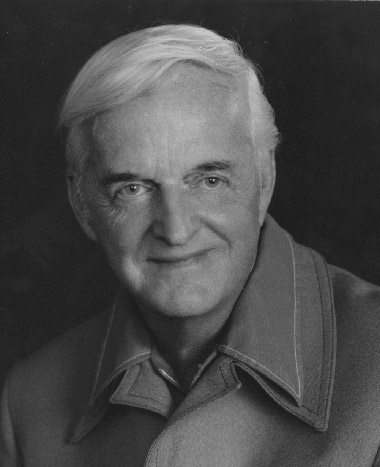Roger Tory Peterson*
Class of 1977
- Artist, Ornithologist & Author

Don't believe everything you see and hear; make your own judgments.
Born in Jamestown, New York, in 1908, Roger Tory Peterson was the son of a Swedish immigrant. Although the family was poor, young Peterson's love for birds was so great that he spent every spare penny he earned from odd jobs to buy birdseed and, eventually, a camera. His father, a cabinet maker, disapproved of his son's obsession. But Peterson saw birds as great symbols of freedom and liberty.
Peterson's skill in sketching birds got him a job in a furniture factory painting Chinese designs on lacquer chests. After completing high school, he went to New York City to study at the Art Students' League and the National Academy of Design.
While teaching science and art at the River School in Brookline, Massachusetts, Peterson continued to compile paintings of birds. He took his idea for a simple bird guide to five publishers before Houghton Mifflin agreed in 1934 to publish 2,000 copies of A Field Guide to the Birds. The first press run sold out in less than a week, and the book was Houghton Mifflin's bestseller on any subject for over 60 years.
That book was followed by a series of other guidebooks to wildlife and natural history subjects ranging from butterflies and wildflowers to animal tracks and shells. Each volume of the Wildlife Guide series featured the "Peterson system" of identification.
By serving as "an interpreter between the scientist and the layman," Peterson's work increased public appreciation of nature and wildlife conservation. "Birds are indicators of the environment," he said. "If they are in trouble, we know we'll soon be in trouble."
Peterson's gallery paintings of birds have been exhibited in dozens of museums and have become collectors' items. Peterson received 23 honorary degrees in science, letters, and fine arts, and he received many other awards recognizing his contributions to science, education, and conservation, including the Presidential Medal of Freedom in 1980. An internationally known lecturer, filmmaker, and photographer, Peterson was credited with helping to build the modern environmental movement. In recognition for the effect of his work, he was twice nominated for the Nobel Peace Prize.
In 1993, the Roger Tory Peterson Institute of Natural History was dedicated in Jamestown, New York, to carry on his work for future generations and to educate society about the natural world. Asked about the future, Peterson once said, "Not all is doom and gloom. We are beginning to understand the natural world and are gaining a reverence for life, all life."
